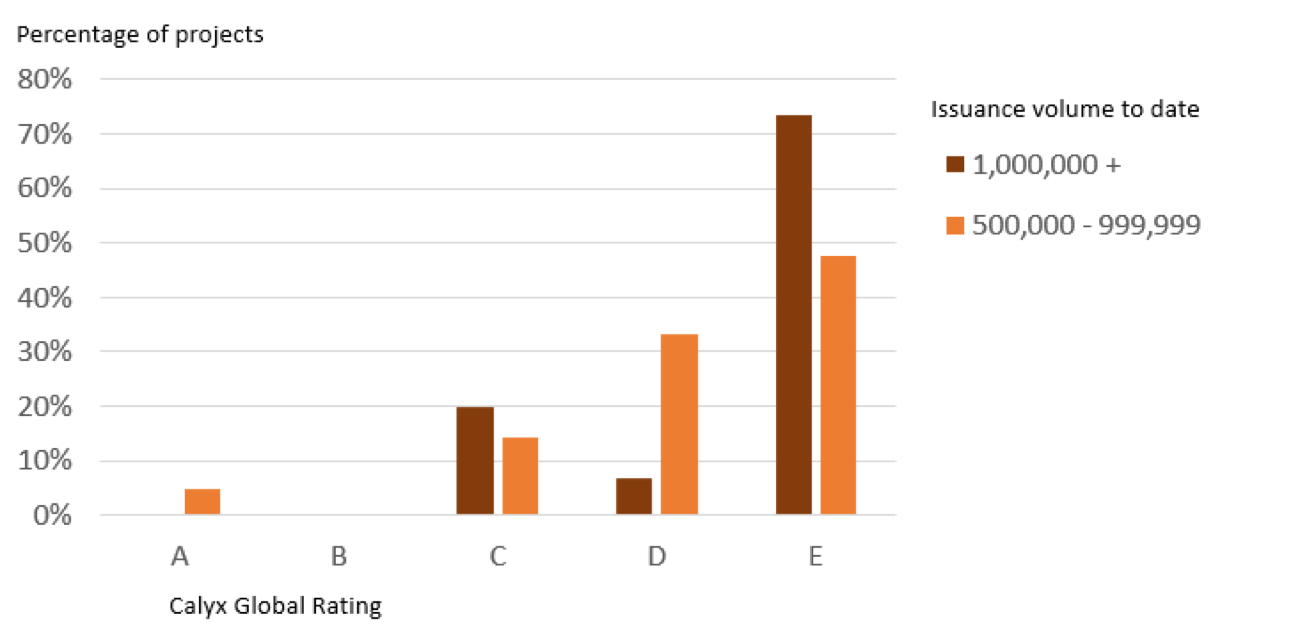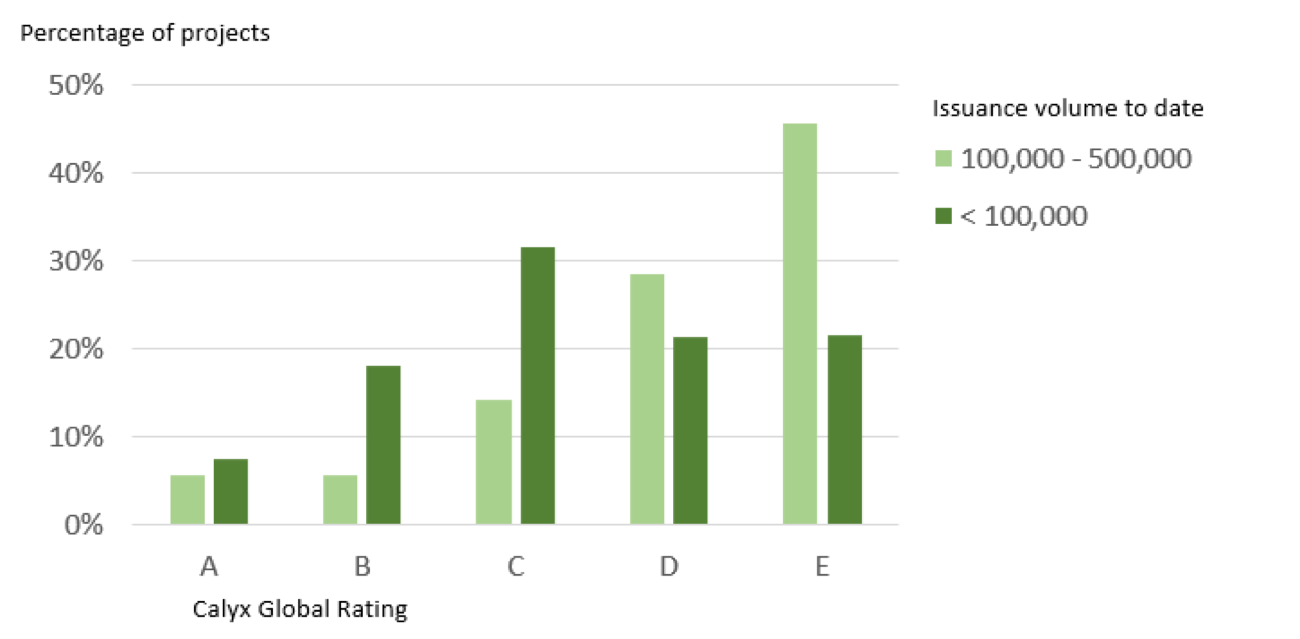.png)
Calyx Global findings on credit quality for large-scale projects align with those of the Guardian study, but the conclusions the article makes are incorrect.
Yesterday, the Guardian published an article saying the “Majority of offset projects that have sold the most carbon credits are ‘likely junk’.” Are they correct?
The answer is not so simple.
Technically, Yes. The Guardian’s article is based on an analysis of the “top 50 emission offset projects, those that have sold the most carbon credits in the global market”. Their analysis is based, therefore, on the largest credit-generating projects.
In this regard, technically, the Guardian article aligns with Calyx Global findings – that ‘mega-projects’ – or those claiming to generate large volumes of credits – tend to be lower quality.
Figure 1: Calyx Global ratings for 36 projects that have issued over 500,000, and 1 million, credits

But conceptually, No. The Guardian cherry-picked data and used that to make spurious conclusions, such as “the VCM is basically a fraud” and “the carbon market… has actually done nothing to mitigate the climate crisis”. These statements are wrong in our view.
Our ratings reveal that there are, in fact, many projects that have had a positive impact on climate change mitigation. This is particularly true of smaller projects, such as those that have issued less than 100,000 credits, as illustrated by the figure below. Of these smaller projects, 94 of them – or nearly one quarter – are A or B rated by Calyx Global.
Figure 2: Calyx Global ratings for 387 projects that have issued less than 500,000 credits

Conclusion: Small can be beautiful
It is not too surprising that larger projects have lower quality – as the biggest issue we see in the “mega projects” is what Calyx Global classifies as over-crediting. This mostly occurs in REDD projects, followed by cookstoves projects. The next most common issue is high additionality risk – which occurs often in large-scale renewable energy projects.
It is worth noting that Figure 2 above is not reflective of the overall market. Calyx Global prioritizes finding high-quality credits – and thus the number of projects we rate is skewed towards project types we believe will have higher quality issuances. Those in the A-rated category, for example, are mostly in the Waste and Industrial Gas sectors. Although, nature-based projects can receive A-ratings as well, and we have written about how REDD and Cookstove projects can improve their ratings.
Calyx Global strives to find higher quality credits. If you want to learn more about our approach, join our upcoming webinar or contact us to find out more about our ratings.Get the latest delivered to your inbox
Sign up to our newsletter for the Calyx News and Insights updates.
